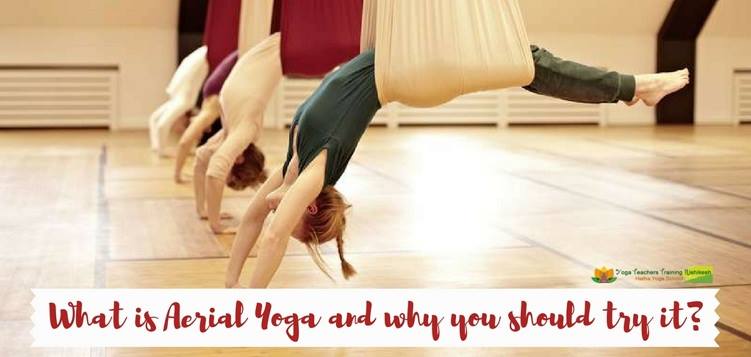Aerial Yoga
Yoga has transformed from a mere sacred discipline derived from the ancient history of Indian civilization into a modern-day alternative to fitness. While many practitioners in the field have depicted profound competencies in Yoga skills, it is imperative to note the different variations of Yoga, such as Aerial Yoga, which can potentially attract a broader audience base. So now you must be wondering, ‘What is Aerial Yoga?’
To answer that question, we must provide a lucid overview of Aerial Yoga’s basic considerations, benefits, and prospects for training and coaching. Aerial Yoga is also called anti-gravity Yoga since it involves the practice of various Yoga postures, dance moves, and acrobatics while suspended in the air with the support of a swing or hammock.

An interesting fact about Aerial Yoga is that its origins were conceptualized by fitness practitioners almost a decade ago in New York to improve the appeal of exercise sessions. Here are some fundamental insights into Aerial Yoga’s procedures, safety concerns, precautions, and benefits that can address your confusion regarding this form of Yoga.
Procedure:
The basic procedure involves suspending an Aerial Yoga swing of high-density nylon according to the practitioner’s height and convenience. The swing has to be attached to the practitioner either at the arms or hips, and then you can suspend yourself on it.
The suspension in the air makes Yoga postures and walking in the park difficult due to the limited pressure on the head and spine. Furthermore, practising Yoga postures in a suspended position allows for holding the poses for an extended period, facilitating practice improvement.
Safety:
One of the foremost concerns regarding safety in aerial Yoga is the height at which the hammock is suspended. The height of the suspension should be maintained to prevent falls and injuries. Professional instructors could relieve such cases by providing relevant guidance for appropriately performing the different postures, thereby limiting the concerns of injuries. Furthermore, avoiding excessive time on the hammock while hanging in inverted positions is essential to prevent unnecessary complications.
Precautions:
Some of the mandatory precautions that must be followed in Aerial Yoga classes could prevent the risks of unnecessary injuries and should be adhered to in all circumstances. Participants are required not to take heavy meals or intoxicating drugs, alcohol or cigarettes before an Aerial Yoga class.
Individuals with high or low blood pressure, nasal blockage, pregnancy, or prosthetic hips shall refrain from practising Aerial Yoga. Other issues that must be considered before enrolling in Aerial Yoga are glaucoma, bone problems, arthritis, vertigo, and recent instances of surgery.
Benefits to be counted:
The benefits of Yoga are not unknown to many, and Aerial Yoga does not fail to impress either! Some of the notable benefits that can be derived from Aerial Yoga can be highlighted as follows:
- Complete engagement of all body muscles provides a comprehensive workout experience and evident stress reduction. It also ensures a wholesome workout for the upper body, thereby improving the participant’s upper body and core strength.
- Aerial Yoga is a promising way to relax hip joints, spine, and back and improve body strength and mobility.
- The impact of Aerial Yoga on the detoxification of the system, alongside an improvement in blood circulation, can be responsible for positive outcomes such as delayed ageing and the onset of cardiovascular problems.
- Aerial Yoga is a promising approach to aligning the body and mind, ensuring the perfect balance of self and uplifting mental peace.
Apart from the benefits mentioned above, Aerial Yoga could also provide substantial opportunities for professional development, primarily through Aerial Yoga Teacher Training programs. Distinct durations and minimum requirements characterise Anti-gravity Aerial Yoga training programs.
A basic certification in fundamental Yoga Teacher Training programs is essential for obtaining admission. However, it is also essential to look for the certification of the service providers that facilitate these training programs, which can land you some of the most promising career opportunities in Aerial Yoga.

I wish there was a place close to me that offered this. It looks so fun, and a good workout.
Yoga is a natural method to get rid of the tension accumulated daily, both in the physical and mental body. Indeed, postures and pranayamas are effective techniques to release stress, often manifested as contractures in the neck, back and joints.